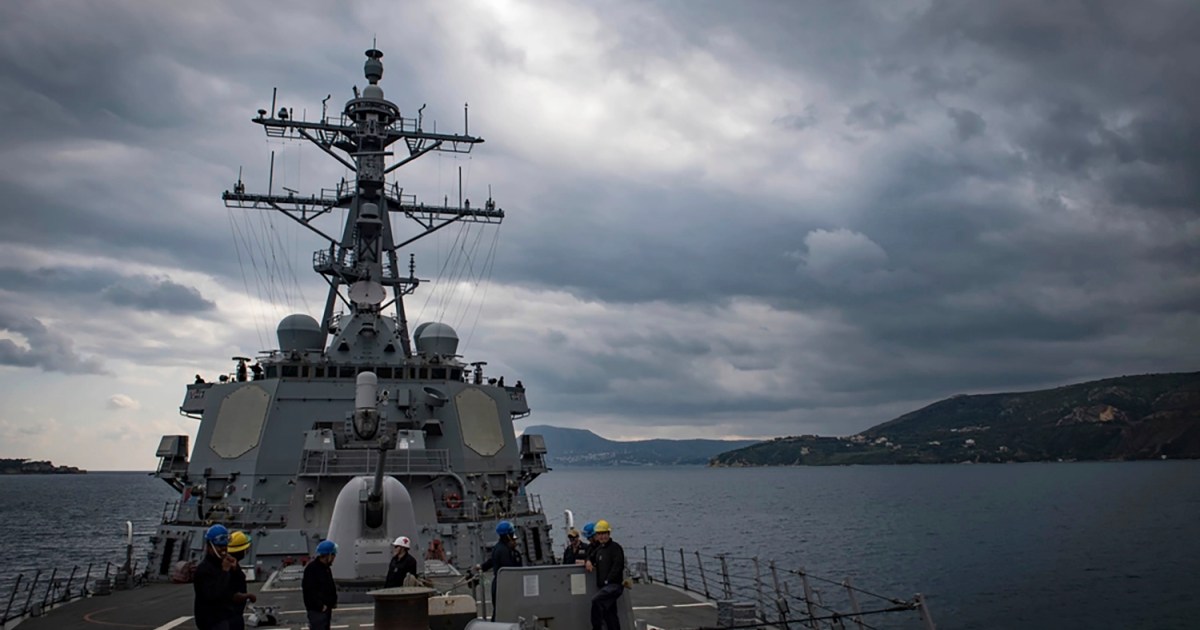
Operation Prosperity Guardian (OPG), the US Navy-led coalition The decision, which is intended to enable international shipping to continue to travel safely through the Red Sea, is expected to come into force within a few days. The operation, which involved allies from Europe and the Middle East as well as Canada and Australia, was opposed by three key NATO countries, France, Italy and Spain.
What is the exact task of OPG?
The official line, “to ensure safe passage for merchant vessels,” is too vague for a Navy flag officer to feel comfortable. Admirals want politicians to give them the precise tasks and clear mandates they need to achieve desired results.
Defining the threat seems easy at the moment: anti-ship missiles and drones of various types with explosive warheads have targeted merchant ships heading to and from the Suez Canal. All were fired from Yemen by the Houthi group, also known as Ansar Allah, which now controls most of the country, including the longest stretch of the 450km Red Sea coast. All missiles were surface-launched, with warheads capable of damaging but unlikely to sink large cargo ships.
The Houthis initially announced they would do so The aim is to target Israeli ships, and then expanded this to include everyone who uses Israeli ports, ultimately those who trade with Israel. After several attacks in which the Israeli connection appeared very distant or vague, it is reasonable to assume that any ship could be targeted.
All missiles neutralized by U.S. and French warships so far have been shot down by sophisticated ship-based surface-to-air missiles (SAM), proving that modern vertical launch systems guided by state-of-the-art phased array radars are working as intended . Many nations scheduled to participate in the OPG have ships with similar capabilities. Almost all also have modern surface-to-surface missiles that can attack targets at sea or on land.
If the OPG’s task were narrowly defined, solely to prevent attacks on merchant ships, it could be carried out according to the centuries-old principle of convoy travel under the protection of warships.
In a convoy, slow, defenseless trade goods sail in multiple columns at precisely defined distances from each other – led, flanked and pursued by fast warships that can take on any threat. The system is effective, as the United Kingdom, Russia, Malta and many other countries that were saved by convoys in World War II can attest.
But every strategy has its limits. A convoy is large and cumbersome, stretching for miles to give giant ships a safe distance from each other and allow them to maneuver when necessary. Regardless of the protective measures taken, huge tankers and container ships – longer than 300 meters (984 feet) – still represent major targets. Merchant ship captains are generally not trained to operate in convoys and most have no experience operating in large groups or under military command.
Their escorts, although well-armed, carry a limited number of missiles and must plan their deployment carefully to allow for further attacks further down the line Shipping route and ultimately leaving a war reserve for the defense of the ship itself. Once they have used up some of the missiles, they must refill them – a task that is possible at sea but can be done much more quickly and safely in a friendly port out of the range of Houthi missiles.
To cover the critical 250 nautical miles (463 km) along the Yemeni coast leading to or from the Bab al-Mandeb Strait, moving at an assumed speed of 15 knots (28 km/h) – since convoys always travel at the speed of the slowest units – ships would be unprotected against even the shortest-range Houthi missiles and drones for at least 16 hours.
And before they even attempted to make the breakthrough, they would be particularly vulnerable in the staging areas in the Red Sea and the Gulf of Aden, where the ships would spend some time massing up, forming a convoy and heading towards make.
It is now known that the Houthis’ missile threat is significant and their arsenal is significant. Naval planners must be concerned about their ability to launch concentrated, prolonged attacks from multiple directions simultaneously.
This was demonstrated in the very first attack on October 19, when the Houthis fired four cruise missiles and 15 drones at the USS Carney, a destroyer that is still operating in the Red Sea and will be part of the OPG. The attack, likely planned to test the Houthis’ attack doctrine and the enemy’s response, lasted nine hours and forced the target ship’s crew to maintain full readiness and concentration for an extended period of time to intercept any incoming missiles.
Any admiral would tell his political superiors that military necessity would require attacks on the Houthi missile infrastructure on the ground in Yemen: fixed and mobile launchers, production and storage facilities, command centers, and what little radar infrastructure exists. A proactive response to the missile threat, in other words, the destruction of Houthi ship targeting capabilities, rather than a reactive response limited to firing missiles as they arrive.
In theory, attacks on the Houthi missile infrastructure could be based on satellite and unmanned aerial vehicle (UAV) reconnaissance and carried out by missiles from the Red Sea and Indian Ocean as well as armed drones from remote land bases. However, the only realistic chance of significant success would be the deployment of fighter aircraft and bombers based on the US Navy’s two nuclear carriers in the region.
Attacks on targets in Yemen have a clear military justification. But they would also bring with them a clear political risk: that the West, particularly the US, would be seen in the Arab and Islamic world as actually entering the Gaza war on Israel’s side. Finally, the Houthis say their attacks on ships in the Red Sea are aimed at getting Israel to end the war.
Aware of the dangers of such a development, which could easily lead to an escalation of the conflict, the US has tried to tread cautiously, working with regional powers and signaling that it does not want escalation. It even openly demanded that its ally Israel limit the suffering of the civilian population and end the conflict as quickly as possible – without success.
The White House and the Pentagon are now on red hot coals. If they do nothing, the Red Sea route will quickly close, causing significant damage to the economies of the United States, Europe and Asia. If the half-hearted measures they are currently proposing, namely escorting convoys without attacking missile sites on land, do not ensure safe passage, then they have lost face and have failed to prevent an economic downturn. And if the United States is finally forced to attack, it will have directly contributed to a dangerous escalation that may be difficult to contain.
Faced with all these dilemmas, France, Italy and Spain are playing it safe: they will “unilaterally” station their frigates in the Red Sea to “protect the ships of their respective nations.” If the US Navy ultimately attacks Yemen, the Europeans can claim that they did not contribute to the escalation of the war and shift all responsibility to the US.






Recent Comments